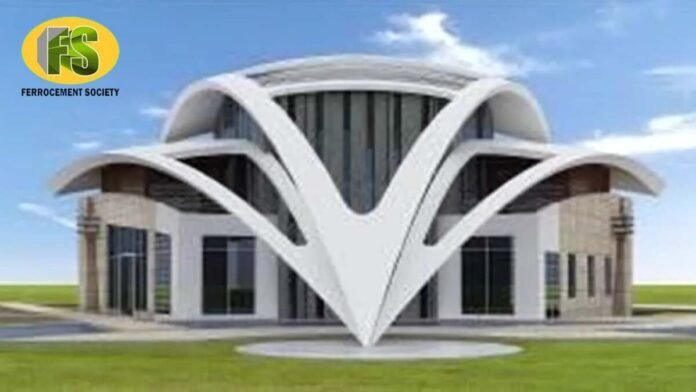Pune, India – September 2025: The construction world is witnessing a silent revolution, and at the heart of it lies ferrocement, a technology that is now regaining global attention for its durability, flexibility, and eco-friendly features. Spearheading this movement in India is the Ferrocement Society, headquartered in Pune, under the leadership of P. P. Lele, President of the Society.
Often described as a “magical material,” ferrocement has already made its mark with hundreds of successful projects in India and abroad. The upcoming 8th International Conference on Ferrocement, scheduled for 12th and 13th September 2025 in Pune, promises to take this innovation further. The event is themed “Art, Science and Technology of Ferrocement Construction” and is being jointly organized by the Indian Ferrocement Society and Bhanuben Nanavati College of Architecture, Karvenagar, Pune.
Rediscovering an Old Yet Revolutionary Technology
Ferrocement is not a new invention. The Italian architect Joseph-Louis Lambot had experimented with it as early as 1849, building the first ferrocement boat. But while conventional reinforced cement concrete (RCC) gained global dominance, ferrocement remained in the shadows. Today, however, architects and engineers are turning back to ferrocement to address the many limitations of RCC.
The method is deceptively simple: wire meshes are layered, and rich, thick cement mortar is impregnated into them. This gives the structure exceptional strength, watertightness, ductility, impact resistance, and freedom of design. What sets ferrocement apart is that it requires no formwork and no coarse aggregates, making it eco-friendly and cost-effective. Its ability to adapt to complex shapes makes it a favorite among modern architects.
Why Ferrocement is Becoming Popular in India
India has already witnessed several success stories. From bungalows in Noida, Bhugaon, and Satara, to canal linings in Nashik, and domes and shells in Buldhana, ferrocement has consistently proven itself as a sustainable and cost-saving alternative.
“Architectural planning of ferrocement buildings is now becoming very popular, and people are actively demanding it,” says Er. Nandkumar Jadhav from Deep Ferrocement, who has worked on landmark projects in Satara.
Government bodies have also recognized its potential. The Government of Maharashtra has published a handbook for field engineers, while the Bureau of Indian Standards (BIS) is working on a dedicated Code of Practice. This is expected to bring much-needed standardization to ferrocement design and construction.
Meanwhile, Dr. B. N. Divekar, a leading authority on ferrocement, has authored textbooks, design manuals, and construction guides that are now even part of the Savitribai Phule Pune University syllabus for civil engineering students.
National and International Recognition
India has been a frontrunner in promoting ferrocement through conferences and workshops. Till date, seven National Conventions have been organized by the Ferrocement Society, and FERRO-1 to FERRO-14 International Conferences have been successfully held across different countries.
The Pune-based society has also conducted more than 150 one-day workshops in engineering and architecture colleges to raise awareness among students. These initiatives have helped build a strong community of ferrocement technocrats across India.
The upcoming 8th International Conference in Pune is expected to be a landmark event. With keynote speakers like Dr. Liberato Ferrara (Italy), Dr. Pete Winslow (UK), and Dr. Antonie Naaman (USA), the gathering will highlight global best practices, research, and case studies. Themes will include advances in ferrocement composites, affordable housing, retrofitting and rehabilitation, sustainable construction, design innovation, and innovative architectural applications.
The entry fee has been kept at a nominal INR 1000, which includes breakfast and lunch, to encourage maximum participation from students, professionals, and enthusiasts.
The Road Ahead: From Workshops to Precast Industries
Experts believe that ferrocement could soon transform India’s construction industry. With precast ferrocement components in the pipeline, the sector is moving towards mechanization and mass production, similar to precast factories in Singapore. Engineers also foresee the possibility of ferrocement replacing pre-stressed concrete components, thanks to its high ductility and tensile strength.
As P. P. Lele emphasizes, “Intelligent use of ferrocement in construction is no longer just an idea—it is becoming a necessity. With standard codes, design manuals, and growing awareness, ferrocement is set to take its rightful place in the construction industry.”
Conclusion
From eco-friendly housing solutions to earthquake-resistant buildings, ferrocement is steadily proving that it is not just an alternative, but the future of sustainable construction in India. With Pune at the epicenter of this movement, India is poised to lead the world in ferrocement innovation.


